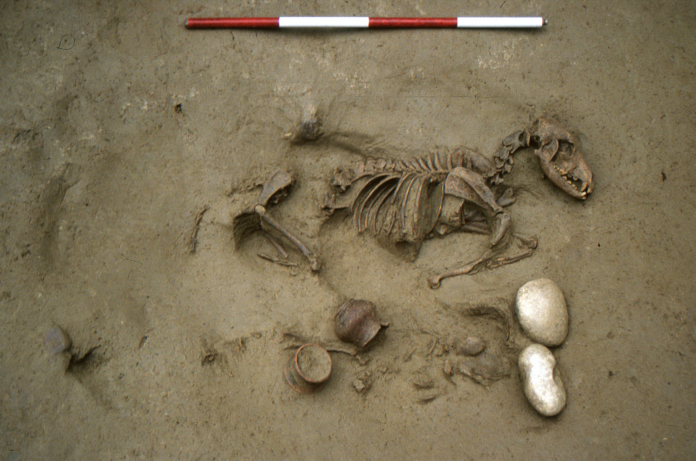It’s a well-known adage among archaeologists that the “deceased do not bury themselves.” Burials are shared, meaningful moments where a community can represent and reinforce what it finds important. And for the Cenomani people, an ancient people from northern Italy, animals were important.
According to a new article in PLOS ONE, a number of Cenomani individuals were buried beside animals and animal parts between the third and first centuries B.C.E. Interred in the necropolis of Seminario Vescovile, in what is now Verona, the burials were varied in terms of the animals interred and the methods of interment, making them tricky for archaeologists to interpret.
Still, the authors of the article say that the burials were probably soaked in symbolism. Some potentially represented the sacrificial rites and rituals of the community, while others represented the close companionship between the buried and their burial companions.
What Animals Were Interred in Ancient Italy?
Recently, a team of researchers reassessed a series of burials from Seminario Vescovile, the necropolis of the Cenomani community in Verona. Settled along the sloping shores of the Adige river, the Cenomani population predated the Roman population in the region, and used the Seminario Vescovile site throughout the third, second, and first centuries B.C.E.
According to the team, 16 of the 161 individuals buried in Seminario Vescovile were buried with animals or animal parts. And while 12 were interred with the remains of animals typically intended for consumption (pigs, cows, chickens), four were interred with the remains of dogs or horses — animals not commonly consumed among the Cenomani, according to a press release.
Read More: These 5 Ancient Civilizations Treasured Their Pets
What’s So Tricky About Ancient Animal Burials?
Animals and animal parts have been buried beside humans throughout history, according to the authors of the article. But the specific meanings and motivations behind these burials are often obscure, particularly in antiquity, thanks to the ambiguity of the archaeological record and the absence of straightforward written sources.
Archaeologists therefore have to interpret ancient burials based on the types of animals buried and on the condition and context of their bodies.
The burial of a part of an animal raised for the purpose of consumption is often interpreted as a sacrificial offering to the deceased, for instance. And the burial of a part of an animal raised for some other purpose is often interpreted in some other way, depending on the symbolism and the social role of the animal among the population that buried it. Also interpreted differently are the burials of whole animals, and of animals without human bones beside them.
Read More: Ancient Pets Got Proper Burials
Why Were Animals Interred in Ancient Italy?
In the study, the researchers followed an interdisciplinary approach, including archaeological, anthropological, and paleogenetic forms of analysis. Their approach showed no significant demographic, dietary, funerary, or genetic similarities among the individuals interred with animals or animal parts — whether among those buried with pigs, cows, and chickens or those buried with dogs and horses.
According to the researchers, the fact that the interred individuals were not closely related to one another was crucial. This ruled out the possibility that the burials were the tradition of a certain clan or family. For instance, among the four individuals interred with dogs or horses — a baby buried with a whole dog, a man buried with a whole dog, a man buried with parts of a horse, and a woman buried with a whole horse, as well as parts of other horses and a dog — none were related.
In the absence of any clear connections between the burials, the authors say that several interpretations remain in the running. The pig, cow, and chicken burials might’ve been sacrificial in nature, meant to serve and sustain the deceased in the afterlife. But the dog and horse burials might’ve represented a symbolic association between the buried people and animals, or perhaps an affectionate companionship between the two prior to their deaths.
“This study,” the authors added in a press release, “may hint at unknown rituals and beliefs.” What those rituals and beliefs may be, well, that’s something for future research to reveal.
Read More: What the Animal Kingdom Meant to Ancient Societies
Article Sources
Our writers at Discovermagazine.com use peer-reviewed studies and high-quality sources for our articles, and our editors review them for accuracy and trustworthiness. Review the sources used below for this article:
Read More: Did Ancient Humans Actually Have Pets Just Like Us?
Source : Discovermagazine






